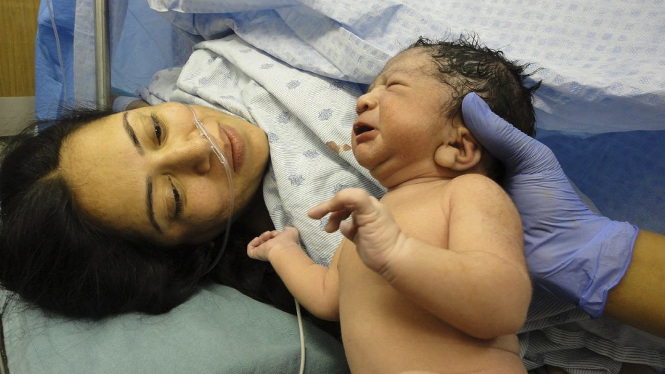
Bringing a child into the world is a beautiful and exciting experience. Yet, sometimes, things don’t go as smoothly as expected.
Birth injuries are an unfortunate reality that some newborns face. These injuries can happen due to complications during delivery, accidents, or other unexpected factors.
Knowing what types of birth injuries exist can help you be prepared, recognize possible signs early, and make informed decisions about your child’s health.
Let’s look at the types of birth injuries parents should be aware of and understand what causes them and what they mean for the future. If the injury was due to an act of negligence, organizations like the Cerebral Palsy Lawyer Alliance are vital in getting the justice you deserve.
Birth injuries can fall into two main categories: physical and neurological (brain and nerve). Here’s what each type includes:
Fractures
Fractures, or broken bones, are among the most common birth injuries, especially to the collarbone. This injury often happens during difficult deliveries. Signs may include swelling, pain when the area is touched, or limited movement. The good news is that these fractures usually heal quickly with care, and newborns rarely need surgery.
Brachial Plexus Injuries (Erb’s Palsy)
This injury affects the nerves that control shoulder, arm, and hand movement. Brachial plexus injuries happen when these nerves stretch or tear, often during difficult births where the baby’s shoulder gets stuck.
Symptoms include
Many babies recover over time, but physical therapy can help speed up healing.
Cephalohematoma
A cephalohematoma occurs when blood collects between the baby’s scalp and skull. This can happen due to pressure on the head, like vacuum extraction during delivery. While it can cause a lump on the head, cephalohematomas usually heal independently over a few weeks as the body absorbs the blood. In most cases, no special treatment is needed.
Cerebral Palsy
Cerebral palsy is one of the most well-known neurological birth injuries. It can happen due to a lack of oxygen during birth, trauma, or infections affecting the brain. Cerebral palsy affects motor skills, making it hard for a child to move, balance, or coordinate muscles. Symptoms vary from mild to severe, but with early treatment, physical therapy, and other supportive care, many children with cerebral palsy can lead fulfilling lives.
Perinatal Asphyxia
This injury happens when a newborn doesn’t get enough oxygen before, during, or after birth. Lack of oxygen can damage the brain, causing lasting effects. Symptoms may include weak muscle tone, difficulty breathing, or an unresponsive appearance. Quick treatment is key, and while some babies recover fully, others may need long-term support depending on the extent of the injury.
Intracranial Hemorrhage (Brain Bleeding)
Intracranial hemorrhage refers to bleeding within the brain, which can occur if there’s trauma during birth, especially in premature babies. Depending on the location and size of the bleed, symptoms can vary. These may include seizures, difficulty feeding, or an unusual cry. The baby may need special care or surgery, which may sometimes lead to lasting challenges.
Spinal Cord Injuries
Spinal cord injuries are rare but can happen during very difficult deliveries if the spine is twisted or put under extreme pressure. These injuries may cause partial or full paralysis, depending on where the injury occurs. Babies with spinal cord injuries need specialized medical attention, and in some cases, they may face life-long mobility challenges.
Facial Nerve Damage
Sometimes, pressure on a newborn’s face during birth can damage the facial nerve, leading to weakness or drooping on one side of the face. This injury can happen when forceps or other tools are used during delivery. In most cases, facial nerve damage heals independently, but if the nerve is seriously injured, a baby might need further care to help with muscle function.
Birth injuries happen for different reasons. Here are a few common factors:
Maternal Factors
Conditions in the birthing parent, such as gestational diabetes or a narrow pelvis, can increase the risk of birth injuries. These conditions might make delivery more difficult or require tools like forceps or a vacuum, which can increase pressure on the baby.
Delivery-Related Factors
Long labors, large baby size, and the use of delivery-assistance tools like forceps or vacuums can increase the risk of certain birth injuries. These tools can create extra pressure on the baby, which sometimes leads to injury.
If your baby experiences a birth injury, it’s essential to get a proper diagnosis from a healthcare provider.
Quick action and early treatment are key to reducing long-term impacts. Specialists, like pediatricians or neurologists, can help create a plan for your child’s care.
For example, physical therapy may aid in healing from nerve injuries, while occupational therapy can support motor skills in cases like cerebral palsy.
Additionally, seeking a second opinion or consulting with an expert can help you feel confident about your choices.
Some birth injuries result from unavoidable complications, while others may occur due to medical mistakes. If you suspect your child’s injury was caused by medical negligence, you may want to consider speaking with a birth injury lawyer. They can help you understand your rights and, if appropriate, pursue compensation to support medical costs, therapies, and other care your child might need.
Birth injuries can be challenging for any family. Understanding the types and causes can help you feel more prepared.
Many children recover or adjust to their challenges with the right medical care and support. Knowledge is a powerful tool that can help parents better understand and support their child’s journey to health and happiness.